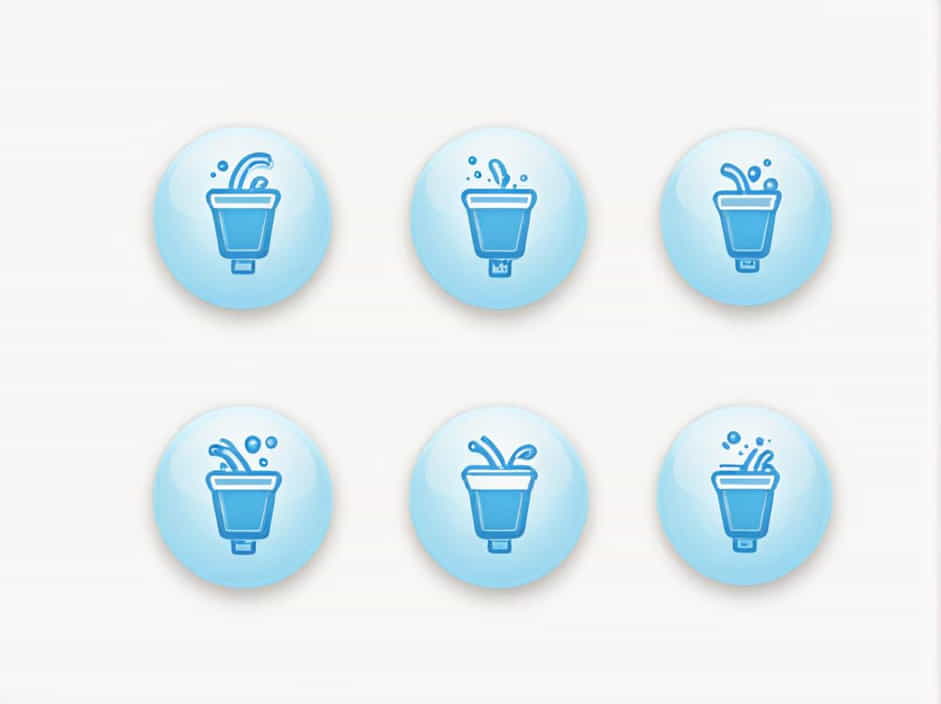Maintaining a clean swimming pool requires proper filtration and backwashing. Backwashing is the process of cleaning a pool filter by reversing the water flow to flush out dirt and debris. However, many pool owners wonder, where does backwash pool water go after it leaves the filtration system?
Understanding how backwash water is disposed of is crucial to prevent environmental damage, water wastage, and legal issues. This topic explores where backwash water typically goes, the different disposal methods, and the best practices for handling it responsibly.
What Is Backwashing?
How Backwashing Works
Backwashing is a method used to clean sand and DE (diatomaceous earth) filters by reversing the water flow through the filter media. This dislodges trapped dirt, oils, and debris, allowing them to be flushed out through a waste line.
Most pool systems have a multiport valve or a push-pull valve that redirects dirty water out of the system during backwashing. The process typically lasts 2 to 5 minutes, depending on the level of contamination.
Why Is Backwashing Necessary?
Without regular backwashing, a pool filter becomes clogged, reducing its efficiency and leading to cloudy water, poor circulation, and algae growth. Backwashing ensures that the filter media remains clean, allowing it to trap new contaminants effectively.
Where Does Backwash Pool Water Go?
Common Disposal Methods
Backwash pool water is expelled through a waste pipe, but where it ends up depends on local regulations and the pool’s plumbing setup. Here are the most common disposal methods:
1. Storm Drains
In some locations, backwash water is directed to storm drains, which lead to nearby rivers, lakes, or the ocean. However, this can be harmful to the environment, as pool water often contains chlorine, salt, and chemicals that can damage aquatic ecosystems.
Important: Many municipalities prohibit draining backwash water into storm drains due to its environmental impact. Always check local regulations before using this method.
2. Sanitary Sewer Systems
A more common and environmentally friendly option is directing backwash water into a sanitary sewer system. This allows the water to be processed at a wastewater treatment facility, where contaminants and chemicals are removed before the water is released back into the environment.
Many pool systems have a designated waste line connection to the sewer, making disposal easy. However, this method may require a permit or compliance with local guidelines.
3. Pool Equipment Drainage Areas
Some pools are designed with a dedicated drainage area where backwash water is collected and allowed to slowly seep into the ground. These areas are usually covered with gravel, sand, or vegetation that helps filter out contaminants before the water reaches natural groundwater sources.
This method is often used in rural areas, but it requires careful management to prevent flooding and soil contamination.
4. Dry Wells or Soak Pits
A dry well or soak pit is an underground drainage system that allows backwash water to percolate into the soil gradually. These systems help prevent water runoff and reduce environmental harm.
Installing a dry well requires proper planning and soil testing to ensure the ground can absorb the water efficiently.
5. Evaporation or Holding Tanks
Some pool owners use holding tanks or containment ponds to store backwash water, allowing chlorine and chemicals to dissipate naturally before disposal. Once the water has been dechlorinated, it can be safely discharged into the ground or used for irrigation.
This method is ideal for water conservation, especially in areas where droughts or water restrictions are common.
Environmental Concerns and Best Practices
Why Proper Disposal Matters
Improper disposal of backwash water can lead to:
- Water pollution – Chemicals like chlorine, algaecides, and pH adjusters can harm aquatic life.
- Soil contamination – Salt and chemicals can degrade soil quality, affecting plant growth.
- Fines and legal consequences – Many areas have strict laws regulating pool water disposal.
Best Practices for Handling Backwash Water
To minimize environmental impact, follow these best practices:
- Check local regulations – Always follow city or county guidelines on pool water disposal.
- Use a dechlorination method – Allow backwash water to sit in a holding tank until chlorine levels drop before discharge.
- Direct water to sanitary sewers – If permitted, this is one of the safest ways to dispose of backwash water.
- Avoid storm drains – Unless explicitly allowed, never release backwash water into storm drains or natural water bodies.
- Use a backwash recovery system – Some pools have filtration and recycling systems to reduce water waste.
Alternative Solutions to Reduce Backwashing
1. Switch to a Cartridge Filter
Unlike sand and DE filters, cartridge filters do not require backwashing. Instead, the cartridges are manually removed and cleaned with a hose, reducing water and chemical waste.
2. Install a Backwash Water Recycling System
Some advanced pool systems feature water recycling units that filter and reuse backwash water, making the process more sustainable.
3. Use a Pool Cover
Keeping a pool covered when not in use reduces debris buildup, minimizing the need for frequent backwashing.
4. Monitor Filter Pressure
Backwash only when necessary-typically when the filter pressure gauge rises by 8-10 psi from the normal operating level. Over-backwashing can waste water and shorten the lifespan of the filter media.
Backwashing is an essential process for maintaining a clean and healthy swimming pool, but knowing where the water goes after backwashing is equally important.
The disposal method depends on local regulations, pool setup, and environmental concerns. While some pools direct backwash water into storm drains, sanitary sewers, dry wells, or drainage pits, others use holding tanks or water recycling systems to minimize waste.
To protect the environment and comply with laws, pool owners should always choose the most responsible disposal method, avoid contaminating natural water sources, and explore eco-friendly filtration options to reduce backwashing needs.
